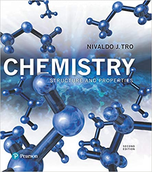?A metal forms the fluoride \(\mathrm{MF}_{3}\). Electrolysis of the molten fluoride by
Chapter 19, Problem 120(choose chapter or problem)
A metal forms the fluoride \(\mathrm{MF}_{3}\). Electrolysis of the molten fluoride by a current of 3.86 A for 16.2 minutes deposits 1.25 g of the metal. Calculate the molar mass of the metal.
Text Transcription:
MF_3
Unfortunately, we don't have that question answered yet. But you can get it answered in just 5 hours by Logging in or Becoming a subscriber.
Becoming a subscriber
Or look for another answer
